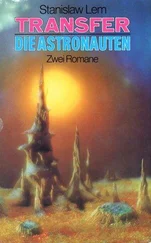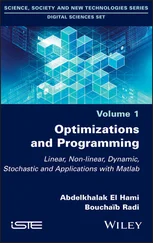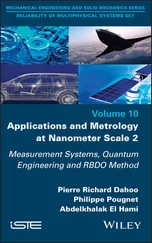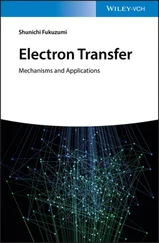Abdelkhalak El Hami

First published 2021 in Great Britain and the United States by ISTE Ltd and John Wiley & Sons, Inc.
Apart from any fair dealing for the purposes of research or private study, or criticism or review, as permitted under the Copyright, Designs and Patents Act 1988, this publication may only be reproduced, stored or transmitted, in any form or by any means, with the prior permission in writing of the publishers, or in the case of reprographic reproduction in accordance with the terms and licenses issued by the CLA. Enquiries concerning reproduction outside these terms should be sent to the publishers at the undermentioned address:
ISTE Ltd
27-37 St George’s Road
London SW19 4EU
UK
www.iste.co.uk
John Wiley & Sons, Inc.
111 River Street
Hoboken, NJ 07030
USA
www.wiley.com
© ISTE Ltd 2021
The rights of Michel Ledoux and Abdelkhalak El Hami to be identified as the authors of this work have been asserted by them in accordance with the Copyright, Designs and Patents Act 1988.
Library of Congress Control Number: 2020949611
British Library Cataloguing-in-Publication Data
A CIP record for this book is available from the British Library
ISBN 978-1-78630-517-6
Thermal science is to thermodynamics as decree is to law. It answers the following question – which all good leaders must (or should) ask themselves whenever they have an “idea”: “How would this work in practice?”. In a way, thermal science “implements” thermodynamics, of which it is a branch. A thermodynamics specialist is a kind of energy economist. Applying the first principle, they create a “grocery store”. With the second principle, they talk about the quality of their products. I add or remove heat from a source or work from a system. And the temperature, among other things, defines the quality of the energy for me.
But by what means do I take or do I give ? Even calculations of elementary reversible transformations do not tell us by what process heat passes from a source to a system.
Thermal science specifies how, but “evacuates” work. If in a given problem related to, for example, a convector where an electrical energy (therefore in the “work” category) appears, it is immediately dissipated into heat by the Joule effect.
Three heat transfer modes can be identified: conduction and radiation – which can be seen separately, although they are often paired up – and convection, which is by nature an interaction of fluid mechanics and conduction.
Dividing the study of thermal science into three is the result of logic. Presenting this work in three volumes is somewhat arbitrary; in our opinion, however, this split was necessary in order to keep the volumes in the collection a reasonable size.
This is Volume 2 of a collection of problems on thermal transfer, dedicated to radiation and digital approaches to transfer. Even though it is primarily a collection of exercises, a great deal of attention is focused on lessons. For the most part, the work is a first introduction to the thermal calculation of practical devices, which may be enough in itself. For subsequent calculations, the reader will still have to turn to specialist works or encyclopedias available in the field of thermics.
In Chapter 1, after a brief historical background, we summarize the vital notions of electromagnetic radiation and how they are written. The emphasis in this book is on the aspect of energy: the notions of photometry prove indispensable at this stage of exploration.
At the heart of studying radiation, Chapter 2focuses on calculating luminances, relying on black body laws (Planck’s law; Rayleigh–Jeans and Wien approximations) and its derivatives: Stefan–Boltzmann laws and Wien laws. For evaluating a fraction of total emittance radiated in a spectral band, the  function proves vital.
function proves vital.
Chapter 3tackles these interactions between a light flux and a material medium, a fundamental subject in any practical calculation of radiation: the phenomena of emission, absorption, transmission, etc., as well as the Kirchhoff law, emissivity, absorption coefficient, etc.
Chapter 4presents the general notions on reciprocal radiation from several surfaces. We distinguish total influence and reciprocal radiation from finite surfaces. This subject is central in particular to the calculation of ovens. Here, we should restrict ourselves to notions, returning to specialist works for application by professionals working with ovens.
Solving a radiation problem often involves knowing and understanding the essence of the corresponding lessons. It is therefore not so easy to produce (interesting) problems that are limited to only being a paragraph long. This is why we were led to focus in Chapter 5on the essence of exercises dedicated to radiation and coupled transfers.
In a domain where digital methods are becoming the rule for complex situations, it seems important to reserve a particular place for “monitoring” analytical approaches. In addition to their usefulness in understanding this domain, they offer the reader a precious tool for making calculations “on the back of an envelope”.
Finally, Chapter 6introduces the reader to a digital approach for different transfer modes. The general problem of modeling is tackled here and examples of processing using ANSYS are presented.
The Appendixcovers the tabulations of G O−λTfunctions whose practical importance emerges from the problems.
December 2020
Introduction
I.1. Preamble
Thermal energy was probably first perceived (if not identified) by humanity, through the Sun. The themes of night and day are found at the center of most ancient myths. Humanity’s greatest fear was probably that the Sun would not return again in the morning. Fire became controlled in approximately 400,000 BP. Thermal transfer was therefore a companion of Homo ergaster , long before Homo sapiens sapiens .
However, it took a few hundred thousand years before so-called “modern” science was born. Newtonian mechanics dates from three centuries ago. Paradoxically, another century and a half passed by before energy was correctly perceived by scientists, in terms of the new field of thermodynamics. Furthermore, a systematic study of heat transfer mechanisms was carried out at the end of the 19th century, and even later for the study of limit layers, the basis of convection.
Heating, lighting and operating the steam engines of the 19th century were all very prosaic concerns. Yet this is where revolutions in the history of physics began: the explosion of statistical thermodynamics driven by Boltzmann’s genius, and quantum mechanics erupted with Planck, again with Boltzmann’s invovlement.
Advances in radiation science, particularly in sensor technology, has enabled us to push back our “vision” of the universe by a considerable number of light years. To these advances we owe, in particular, the renewed interest in general relativity that quantum mechanics had slightly eclipsed, through demonstration of black holes , the physics of which may still hold further surprises for us.
Closer to home, fundamental thermal science, whether it is conduction, convection or radiation, contributes to the improvement of our daily lives. This is particularly true in the field of housing where it contributes, under pressure from environmental questions, to the evolution of new concepts such as the active house.
Читать дальше
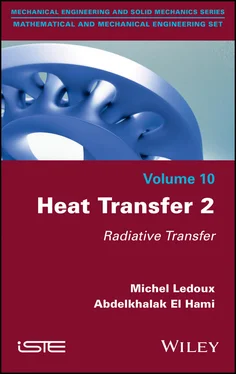

 function proves vital.
function proves vital.



